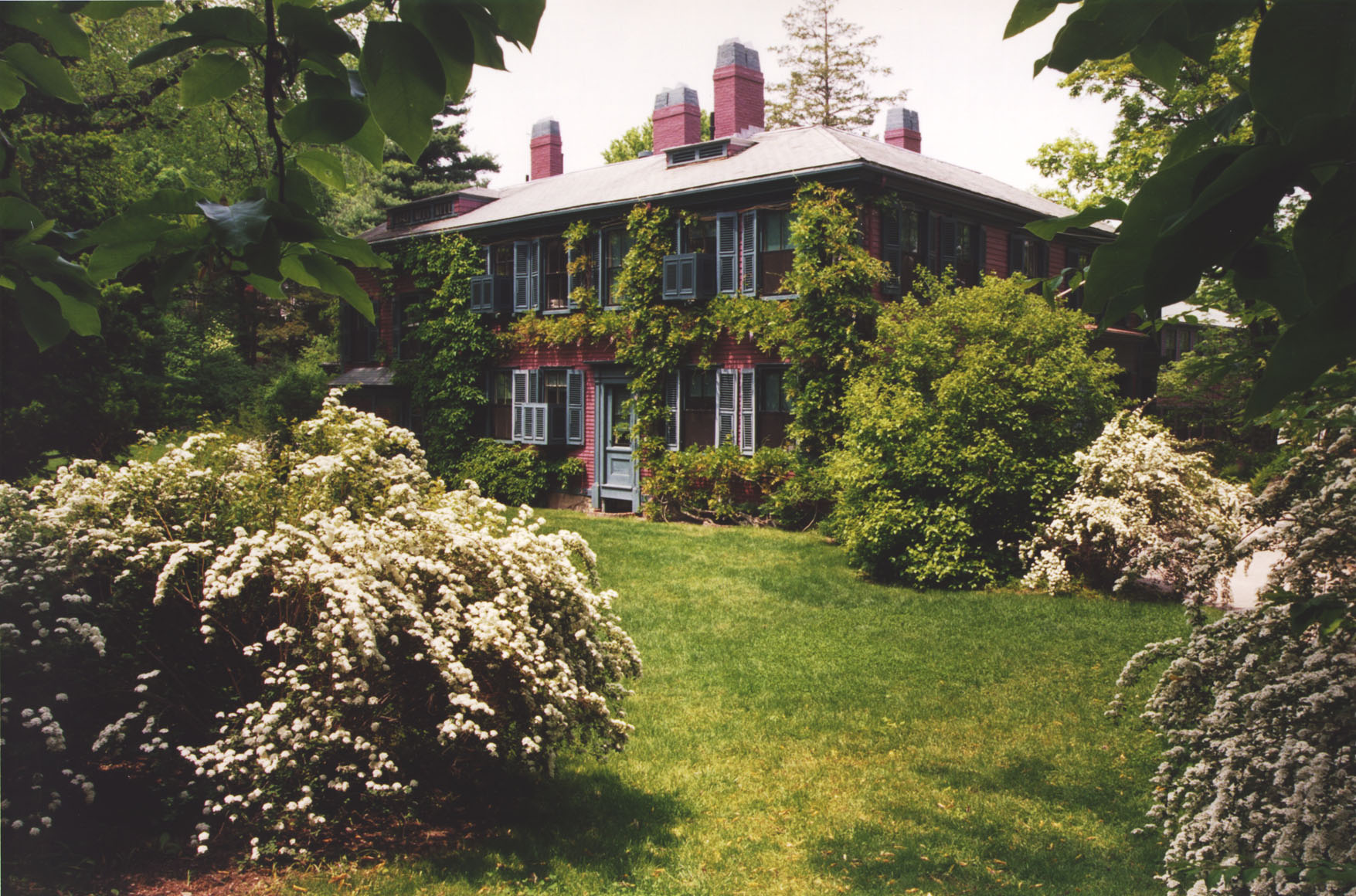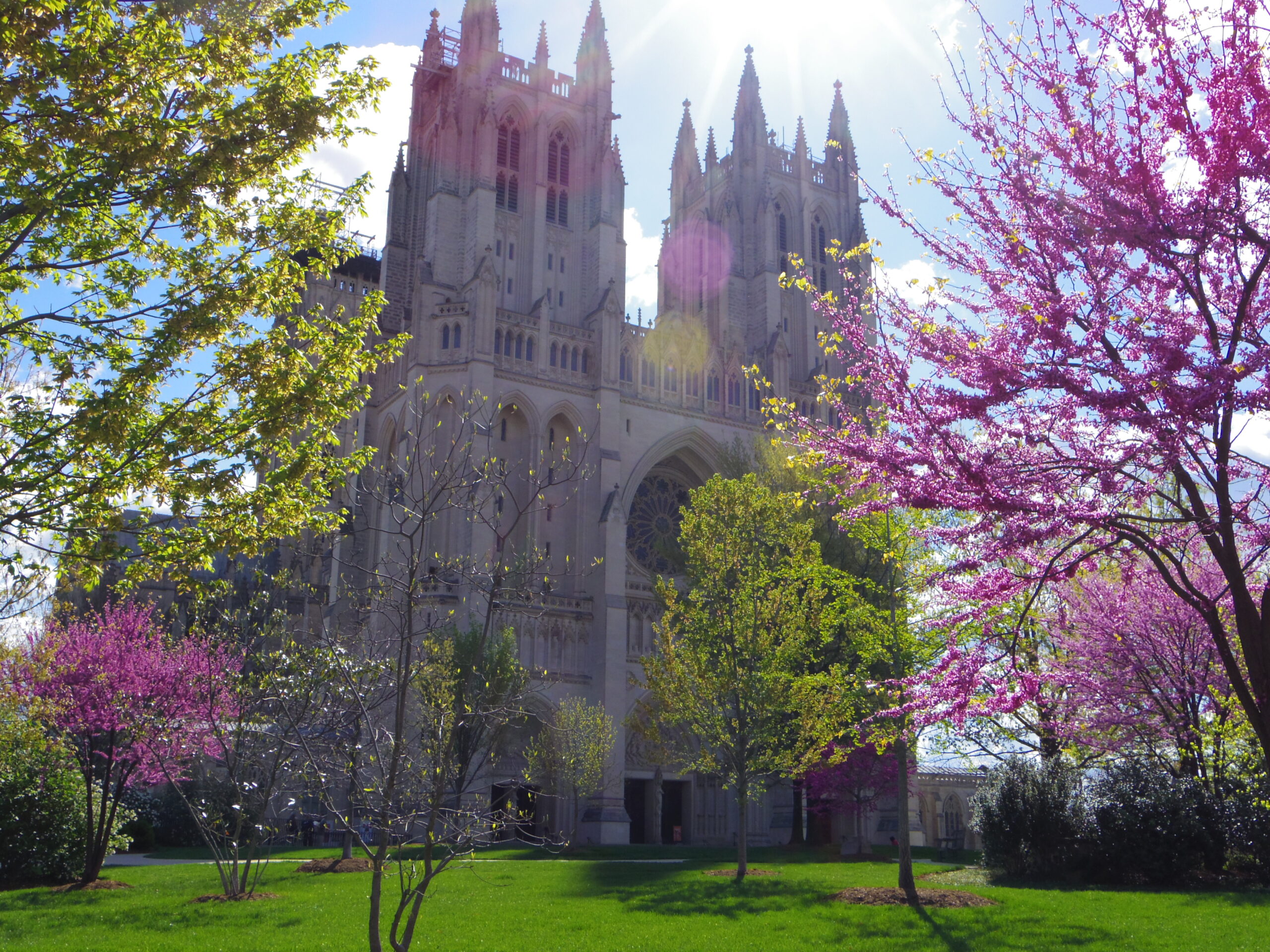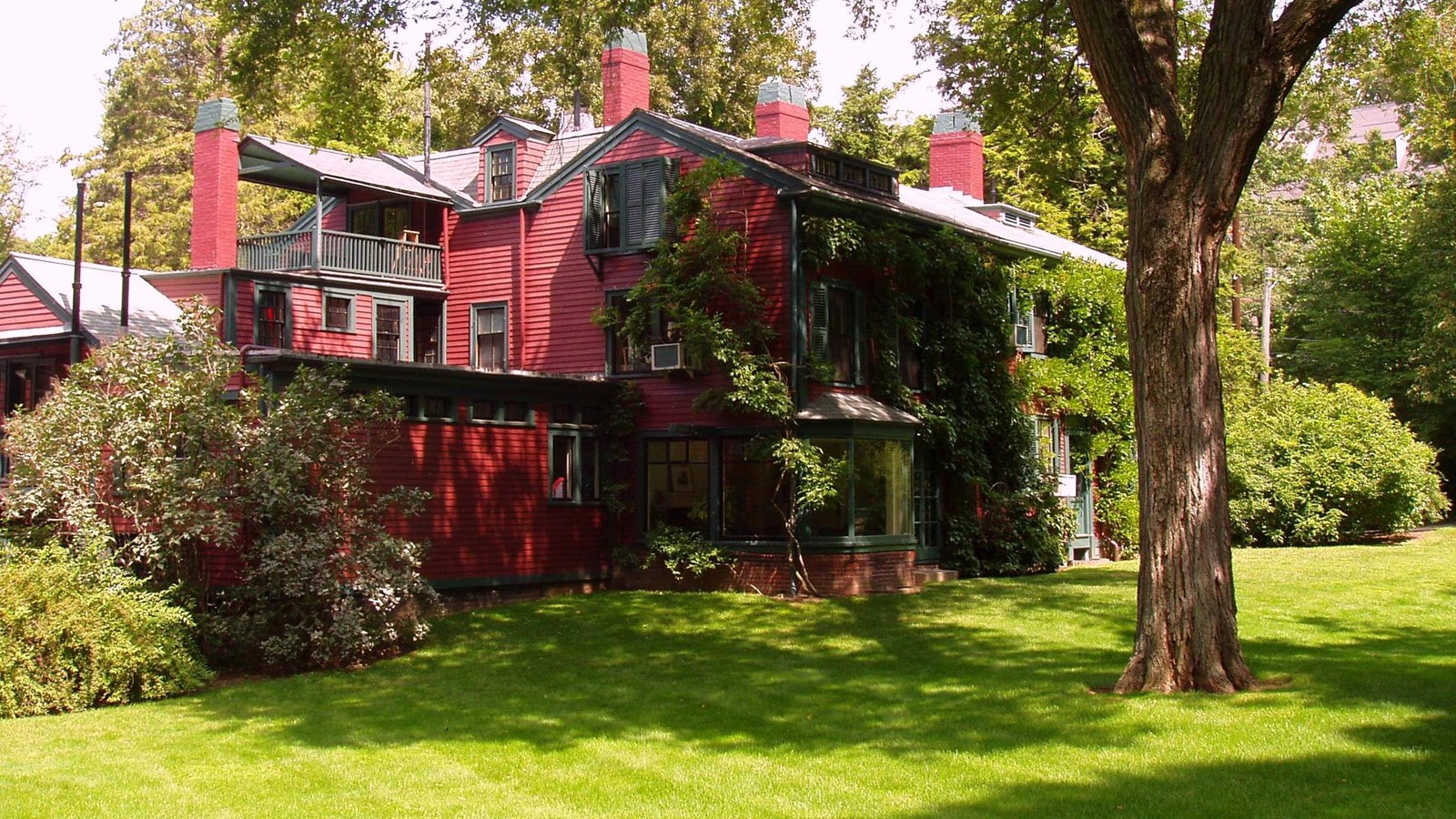
“This is a civilized community. I am going to live here.”
A New Englander at heart, Olmsted felt Brookline was a perfect mix between city and country life. Not only would it take the family from the bustle and stress of New York City but it would take them to a community filled with artists, writers, poets, and designers— including good friend and collaborator Henry Hobson Richardson. Brookline provided the Olmsteds with a neighborhood of like-minded people who wanted to better their community.
Fairsted, served many roles— as so many Olmsted-designed landscapes do! Standing as the family home, named for Olmsted’s ancestral home in England, the ever-growing footprint of the building also housed the nation’s first full-scale landscape architecture office. In its nearly 100 years of practice, this professional office also served as one of the first landscape architecture schools, welcoming generations of landscape architects, engineers, and draftsmen to Brookline. This on-the-job training would lead some to careers in the firm as high-ranking employees or partners or set them up to start their own practices.
The Fairsted landscape also allowed Olmsted to use the relatively small 1.75-acre property to feature signature examples of Olmsted’s design principles. Curvilinear lines, layering plant material, borrowed views, balancing shadow and sun, and sequencing are just a few examples of the physical features that lead to the restorative influence designed landscapes can have on human thought, feeling, and interactions.
Olmsted was already working on his commission for the Boston Park System— now known as the Emerald Necklace— when he and his family made the move in 1883. As he was well-established in his career at the time, Boston Park Commissioners afforded him more freedom in his designs than in previous works. Fairsted grew in physical size and influence as the firm took on more employees and workloads increased. While Olmsted was nearing the end of his career, he did not want the priorities of his work to be lost in the firm’s boom. He wanted to ensure the work in Boston did not suffer, writing to his sons and partner: “Nothing else compares in importance to us with the Boston work…I would have you decline any business that would stand in the way of doing the Best for Boston all the time.”
The legacy of this firm and these landscapes remain an important narrative in the American story. In 1979, through Congressional act, the National Park Service acquired the site. The site was and continues to be unique in the agency as a key legislative reason for the creation of the park was the vast Olmsted archives. With over one million documents in the archive, the NPS was challenged to manage and make accessible the working documents of the almost 6,000 landscape projects of the Olmsted firm. By 1990, the site secured funding and began a fourteen-year project to catalog and conserve the collection with the continuing goal of public accessibility. This was later followed by a project to digitize the collection. This project is ongoing today as scans are creating high-resolution digital images available online.
While the addition of the site, including the archives, may have been new to the agency, the Olmsted family certainly was not new to the park service. The connection between the Olmsteds and the National Park Service dates to 1865 when Frederick Law Olmsted made his first venture to Yosemite Valley. He was shocked by what he saw. Never had he seen trees tower so tall and rock faces rise so vertically. Unrestricted use, including daily logging, left Yosemite at risk for long-term damage and privatization. The Yosemite Act, which was passed by President Lincoln, was the first federal land protection. Olmsted’s groundbreaking Yosemite and the Mariposa Grove report set forth lofty and unprecedented goals focusing on preserving land not for profit but for the people’s enjoyment. “Give every advantage practicable to the mass of the people to benefit by that which is peculiar to this ground and which has caused Congress to treat it differently from other parts of the public domain. This peculiarity consists wholly in its natural scenery.”
Olmsted’s Yosemite Report was controversial for its time— how could land be set aside for a public park instead of making a profit from that land? But it was this very idea that would later contribute to the establishment of the National Park Service. In 1916, echoing his father’s earlier sentiments, Frederick Law Olmsted, Jr., sat in the North Parlor of Fairsted to draft language for the mission statement of the Organic Act. This legislation created the National Park Service as a federal agency to manage the growing number of natural parks and historic sites. The newly established National Park Service was tasked “….to conserve the scenery and the natural and historic objects and the wildlife therein and to provide for the enjoyment of the same in such manner and by such means as will leave them unimpaired for the enjoyment of future generations.”
Since Olmsted’s move in 1883, Fairsted served as the place of many places, seeing the conception of approximately 6,000 landscape projects. With some of these landscapes degrading over time, the archival documents at Fairsted— The Olmsted Archives— are more important than ever. A landscape can often be fully restored by referring to the archives including the original plans and drawings, most of which are stored in Fairsted’s vault.
To explore lesser-known Olmsted landscapes in your area, visit our archives page.
Jill Trebbe, Site Manager, Frederick Law Olmsted NHS & John Fitzgerald Kennedy NHS
Read other blogs about Fairsted:
Establishing the Frederick Law Olmsted National Historic Site
Meeting Beauty











